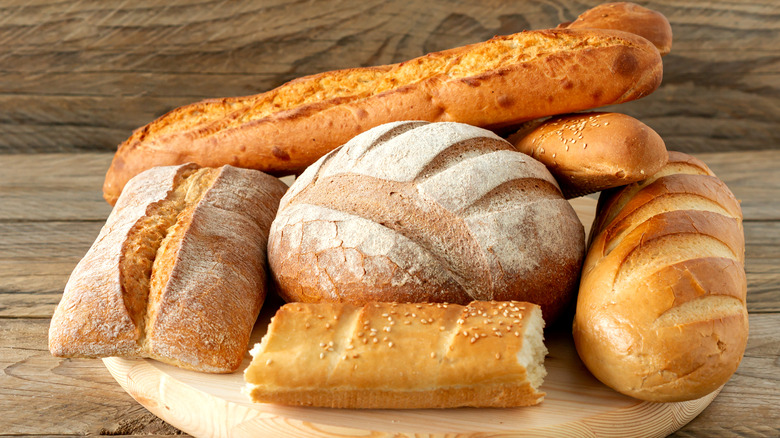How American Wheat Differs From European Wheat
Thoughts of Europe conjure up visions of quaint bakeries oozing the heavenly aroma of fresh-baked bread. Interestingly, many Americans who travel to Europe find that the bread overseas is not only delicious, but easier on the stomach, too. Anecdotal evidence abounds of Americans who, after eating a gluten-free diet at home because of gastrointestinal problems associated with wheat, happily find that indulging in European bread and pasta cause no problems at all (via Dr. Lauren Deville). This has led many to wonder what might be behind the difference.
Although there are several different varieties of wheat grown throughout the U.S., the majority of wheat grown in the U.S. — about 60% — tends to be hard red wheat that has a relatively high protein content (mostly in the form of gluten). In Europe, on the other hand, the majority of wheat grown tends to be of the "soft" — or lower protein — varieties. Most European wheat, therefore, has lower gluten content than its American counterpart (via HowStuffWorks).
European breads are made with 'soft' wheat
According to chiropractor and keto expert Dr. Eric Berg, another key difference is that the herbicide glyphosate (which is the main ingredient in Roundup) is used on American wheat crops more widely than on European wheat crops. In fact, glyphosate is actually banned in a number of European countries. Glyphosate is effective at killing bacteria, but the residue that winds up in food products kills not only pathogenic bacteria but also beneficial bacteria, disrupting the body's microbiome. The end result can be a hampered ability to digest food, especially wheat products (via Public Goods).
There are other differences, too, in soil type and growing methods, which contribute to differences in the final wheat product.
While there are some significant differences between American and European wheat, it's important to note that there's also overlap between the continents. Europe imports approximately 1.1 million pounds of American wheat every year, so there's plenty of American wheat to be found overseas. European flours are available in European delis nationwide in the U.S. too, for any time that craving for authentic Italian pizza crust hits.


